Prashant Bhargava
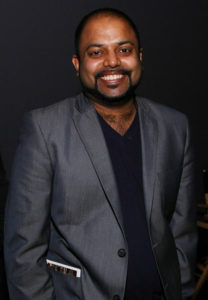 Prashant Bhargava is an award winning filmmaker and commercial director/designer, described by producer Anthony Bregman as “visionary and soulful”, “masterful” by Roger Ebert and a “humanist and real talent” by Michael Phillips of the Chicago Tribune. With his signature “hypnotically beautiful visuals”, “naturalistic storytelling” and a “colorfully vivid” poetic style, Prashant Bhargava stands at the leading edge of independent film with his “original storytelling and honest craft”.
Prashant Bhargava is an award winning filmmaker and commercial director/designer, described by producer Anthony Bregman as “visionary and soulful”, “masterful” by Roger Ebert and a “humanist and real talent” by Michael Phillips of the Chicago Tribune. With his signature “hypnotically beautiful visuals”, “naturalistic storytelling” and a “colorfully vivid” poetic style, Prashant Bhargava stands at the leading edge of independent film with his “original storytelling and honest craft”.
Bhargava’s filmmaking builds from his pioneering work as a commercial director and motion designer. Known for his intricately layered and lush visuals, Bhargava spear headed over 100 campaigns for HBO including The Wire, Def Poetry Jam, Rome and OZ and films such as Born into Brothels, John Frankenhiemer’s Path to War, Mira Nair’s Hysterical Blindness, Raoul Peck’s Lumumba, and Denzel Washington’s Antwone Fisher. Bhargava has designed effects sequences for Alex Rivera’s feature Sleep Dealer (Berlin, Sundance) and directed music videos and promos for bands Cornershop, Talib Kweli and Missy Elliot. Notable clients include Accenture, NBC, Woolrich, PBS, Blue Cross Blue Shield, Volvo and OMango. He has collaborated with numerous design and production studios including R/GA, Click 3x and Edgeworx. His commercial work has earned recognition by the Broadcast Design Assocation and Adobe Systems.
Bhargava’s feature length directorial debut, PATANG (The Kite), currently in theaters, is anthem of the old city of Ahmedabad, weaving the stories of six people during India’s largest kite festival. Defying convention in its process and cinematic language, PATANG united a community ravaged by religious conflict and natural disaster. Starring two of India’s finest actors Seema Biswas and Nawazuddin Siddiqui, PATANG is receiving rave reviews, garnering a rare 4 stars from Roger Ebert who selected chose the film as 1 of 12 films in his annual film festival. The New York Times selected PATANG as a Critics Pick, celebrating its “lovely, unforced quality”. Hailed as a “masterpiece” by celebrated composer Michael Nyman, “reminiscent of Wong Kai Wai” (Los Angeles Times), “warranting comparison to cinema’s great poet Terence Malick” (HollywoodChicago.com), PATANG has been showcased to sold out audiences across the globe in over 30 international film festivals and recognized as “one of the best films” of 2012 (Ithaca.com). PATANG premiered at prestigious Berlin Film Festival and in the highly selective main competition at the Tribeca Film Festival. PATANG is the winner of the Best Feature Narrative at the Hawaii Film Festival, Best World Narrative at the Indy Film Festival, a Special Jury Award at the Osians Film Festival in New Delhi, Best Feature Narrative at the DC APA Film Festival and received both Best Film and Best Director at SAIFF’s Rising Star Film Awards.
Bhargava’s short film SANGAM, described by Greg Tate of the Village Voice as “an elegant and poetic evocation of immigrant angst, memory and haunted spirituality”, premiered at the Sundance Film Festival, recieving awards at the Clermont Ferrand Film Festival, Nashville Film Festival and Short Shorts Asia. “Beautiful shot on Super 16, Super 8 and still photography” the “poetic and affecting” film (Indiewire) was distributed by Film Movement and MUBI and broadcast on Arte/ZDF, The Sundance Channel and PBS. His other directorial efforts include the documentary portrait of his grandmother AMMAJI, experimental Super 8 short BACKWATERS (Vimeo Staff Pick) and the poignant and meditative KASHMIR, an audiovisual performance with band Dawn of Midi on broken dreams and natural beauty in war torn Kashmir. He directed film segments for the politically searing Still Life Commentator by Vijay Iyer & Mike Ladd (BAM Next Wave Festival).
Born and raised on the southside of Chicago, Bhargava’s interest in the arts began as a graffiti artist. Bhargava studied computer science at Cornell University and theatrical directing at the Barrow Group and at the Actors Studio MFA program. He has lectured at New York University, Columbia College, Cornell University, Amherst College, CUNY, University of Chicago and CEDIM. Bhargava was an Copeland Fellow at Amherst College and New York Foundation of the Arts Fellow in both 1997 and 2012.
Bhargava’s latest collaboration with grammy nominated musician Vijay Iyer, a film with live orchestral music, is entitled RADHE RADHE: Rites of Holi. Based on Stravinsky’s Rite of Spring, the film is a journey of sexual desire and primal devotion during the vibrant celebration of Holi in Mathura, India.
http://www.patang.tv/director.php
Prashant Bhargava passed away on May 16, 2015. The Ojai Music Festival’s performance of RADHE RADHE will be dedicated to Mr. Bhargava.
Graham Haynes, cornet and flugelhorn
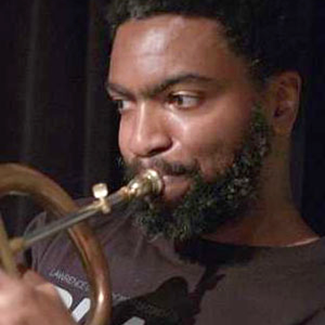
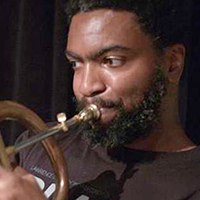 Graham Haynes is an American cornetist, trumpeter and composer. The son of jazz drummer Roy Haynes,[1] Graham is known for his work in nu jazz, fusing jazz with elements of hip hop and electronic music.
Graham Haynes is an American cornetist, trumpeter and composer. The son of jazz drummer Roy Haynes,[1] Graham is known for his work in nu jazz, fusing jazz with elements of hip hop and electronic music.
With aspirations to push jazz beyond its traditional boundaries, Graham Haynes’ first foray into electronic music came in 1979 upon meeting alto saxophonist Steve Coleman. Together, they formed a band called Five Elements, which launched an influential group of improvisers called M-Base Collective. After the formation of his own ensemble – Graham Haynes and No Image – and the subsequent release of an album (What Time It Be?), Haynes would spend the balance of the 1980s studying a wide range of African, Arabic and South Asian Music. After a move to France in 1990, Haynes incorporated these far-off influences into his next two releases – Nocturne Parisian and Griot’s Footsteps.
Roscoe Mitchell, winds

 Internationally renowned musician, composer, and innovator, began his distinguished career in the spirited 1960s of Chicago, Illinois. His role in the resurrection of long neglected woodwind instruments of extreme register, his innovation as a solo woodwind performer, his and his reassertion of the composer into what has traditionally been an improvisational form have placed him at the forefront of contemporary music for over four decades. A leader in the field of avant-garde jazz and contemporary music, Mr. Mitchell is a founding member of the world renowned Art Ensemble of Chicago, the Association for the Advancement of Creative Musicians, and the Trio Space.
Internationally renowned musician, composer, and innovator, began his distinguished career in the spirited 1960s of Chicago, Illinois. His role in the resurrection of long neglected woodwind instruments of extreme register, his innovation as a solo woodwind performer, his and his reassertion of the composer into what has traditionally been an improvisational form have placed him at the forefront of contemporary music for over four decades. A leader in the field of avant-garde jazz and contemporary music, Mr. Mitchell is a founding member of the world renowned Art Ensemble of Chicago, the Association for the Advancement of Creative Musicians, and the Trio Space.
Muhal Richard Abrams, piano

 Muhal Richard Abrams has been in the forefront of the contemporary music scene for well over forty years. Muhal is a co-founder of The Association for the Advancement of Creative Musicians (AACM), founder of The AACM School of Music and President of The Association for the Advancement of Creative Musicians, New York City Chapter. Muhal was the first recipient of the grand international jazz award, “The Jazzpar Prize”, which was awarded to him in 1990 by the Danish Jazz Center in Copenhagen, Denmark.. In 1999 Muhal was presented a proclamation by Richard M. Daley, Mayor of the City of Chicago, declaring April 11, 1999 as Muhal Richard Abrams Day in Chicago.
Muhal Richard Abrams has been in the forefront of the contemporary music scene for well over forty years. Muhal is a co-founder of The Association for the Advancement of Creative Musicians (AACM), founder of The AACM School of Music and President of The Association for the Advancement of Creative Musicians, New York City Chapter. Muhal was the first recipient of the grand international jazz award, “The Jazzpar Prize”, which was awarded to him in 1990 by the Danish Jazz Center in Copenhagen, Denmark.. In 1999 Muhal was presented a proclamation by Richard M. Daley, Mayor of the City of Chicago, declaring April 11, 1999 as Muhal Richard Abrams Day in Chicago.
Except for a brief period of study at Chicago Musical College and Governors State University in Chicago, Illinois where he studied electronic music, Mr. Abrams is predominately a self-taught musician who, as a result of many years of observation, analysis, and practice as a performing musician, has developed a highly respected command of a variety of musical styles both as a pianist and composer. The versatile Mr. Abrams and members of The AACM are responsible for some of the most original new music approaches of the last three decades.
Jen Shyu, performer/composer
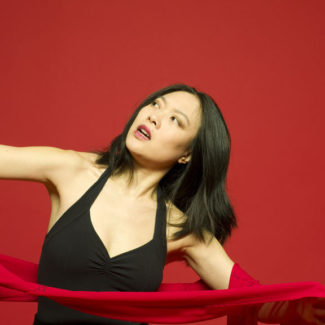
 Born from Taiwanese and East Timorese immigrant parents, 2016 Doris Duke Artist Jen Shyu (Chinese name: 徐秋雁) is an experimental jazz vocalist, composer, multi-instrumentalist, dancer, producer, and Fulbright scholar. Known mostly for her virtuosic singing with saxophonist and 2014 MacArthur Genius Fellow Steve Coleman since 2003 and having collaborated with innovators Anthony Braxton, Bobby Previte, Chris Potter, Michael Formanek, and David Binney to name a few, she has performed her own music around the world in such venues as Carnegie Hall, Lincoln Center, Brooklyn Academy of Music, Metropolitan Museum of Art, Rubin Museum of Art, Ringling International Arts Festival, Asia Society, Roulette, Blue Note, Bimhuis, Salihara Theater, National Gugak Center, and National Theater of Korea and festivals around the world.
Born from Taiwanese and East Timorese immigrant parents, 2016 Doris Duke Artist Jen Shyu (Chinese name: 徐秋雁) is an experimental jazz vocalist, composer, multi-instrumentalist, dancer, producer, and Fulbright scholar. Known mostly for her virtuosic singing with saxophonist and 2014 MacArthur Genius Fellow Steve Coleman since 2003 and having collaborated with innovators Anthony Braxton, Bobby Previte, Chris Potter, Michael Formanek, and David Binney to name a few, she has performed her own music around the world in such venues as Carnegie Hall, Lincoln Center, Brooklyn Academy of Music, Metropolitan Museum of Art, Rubin Museum of Art, Ringling International Arts Festival, Asia Society, Roulette, Blue Note, Bimhuis, Salihara Theater, National Gugak Center, and National Theater of Korea and festivals around the world.
Explore 2017 Festival Artists on Spotify
Prepare for June by listening to upcoming Festival artists using our Spotify playlists.
Sitting In with Vijay Iyer
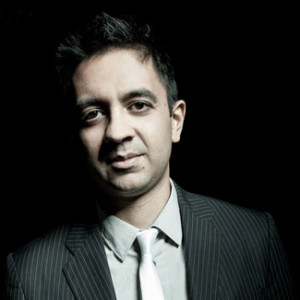 Back in 1992 Vijay Iyer, studying physics at UC Berkeley and living in Oakland, crossed the street to check out the music in a neighborhood club. Before long the young graduate student and largely self-taught jazz pianist was sitting in with a cohort of local elder statesmen, three and four times his age. Music had already begun to dominate Vijay’s interests, but those evenings in the Bird Kage club taught him something more: his creative juices began to flow when curiosity overcame diffidence, and wariness gave way to mutual trust. Ever since, he has been crossing streets and sitting in, finding his place in a succession of vibrant musical communities.
Back in 1992 Vijay Iyer, studying physics at UC Berkeley and living in Oakland, crossed the street to check out the music in a neighborhood club. Before long the young graduate student and largely self-taught jazz pianist was sitting in with a cohort of local elder statesmen, three and four times his age. Music had already begun to dominate Vijay’s interests, but those evenings in the Bird Kage club taught him something more: his creative juices began to flow when curiosity overcame diffidence, and wariness gave way to mutual trust. Ever since, he has been crossing streets and sitting in, finding his place in a succession of vibrant musical communities.
Vijay Iyer likes thinking about communities – where you find them, how they are formed, what cultural expressions they create. And what they create is very much a question of how they listen. The communities Iyer has found create music through improvisation – listening, thinking, weighing options, making decisions, finding ways to open new doors, or, as he likes to put it, “responding to crisis.” So from jamming with friends and strangers, seeking out mentors, and studying the masters he has developed his own distinctive musical personality combining expressive warmth with dazzling inventiveness. In the meantime, his academic interests turned toward the cognitive science of music: questions about how we listen, how we make music, and how we interpret what we hear. For Iyer, a MacArthur Fellow and Harvard professor, music is both emotional and intellectual, visceral and analytical, an activity whose structure and syntax are deeply imbedded in our shared humanity and cultural experience.
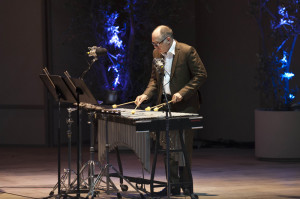 For all his celebrity, he is remarkably self-effacing and in conversation devotes a good deal of time speaking about others – celebrated idols, cherished teachers, treasured colleagues, admired contemporaries to whom he feels indebted. It is therefore no surprise that his selection of artists for this year’s festival is both multi-generational and deeply personal: “people who are dear to me – each has changed my life.” People like the cellist Okkyung Lee and choreographer Michelle Boulé (“visceral, awe-inspiring”), Steven Schick (“a transformative influence”), or Roscoe Mitchell (“completely changed my idea of what music can be”) – musicians who have inspired, challenged, and even confounded him.
For all his celebrity, he is remarkably self-effacing and in conversation devotes a good deal of time speaking about others – celebrated idols, cherished teachers, treasured colleagues, admired contemporaries to whom he feels indebted. It is therefore no surprise that his selection of artists for this year’s festival is both multi-generational and deeply personal: “people who are dear to me – each has changed my life.” People like the cellist Okkyung Lee and choreographer Michelle Boulé (“visceral, awe-inspiring”), Steven Schick (“a transformative influence”), or Roscoe Mitchell (“completely changed my idea of what music can be”) – musicians who have inspired, challenged, and even confounded him.
Today Vijay inhabits a post-genre world, and Ojai 2017 will no doubt challenge and confound our notions of music. The familiar – Bach’s Art of the Fugue, Stravinsky’s Rite of Spring (in a new arrangement for 12 players) – are juxtaposed with his Time, Place, Action for quartet and piano, Emergence for piano trio and orchestra, and his score to Prashant Bhargava’s Radhe Radhe: Rites of Holi, a cinematic refraction of the Indian festival of Holi, created for the centennial of Stravinsky’s iconic Rite. We’ll also hear a newly commissioned violin concerto for Jennifer Koh, and performances by some of the foremost improvisers of today, including three legends: Wadada Leo Smith, Roscoe Mitchell, both in their 70s, and pianist Muhal Richard Abrams, now 86 – living exemplars of generational transmission, a reminder of the “real education” Iyer received when he sought out musicians “older, better, wiser than me.”
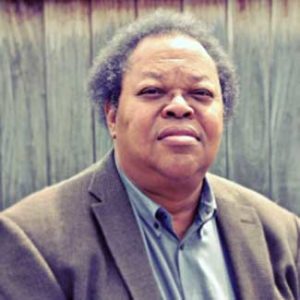 Smith, Mitchell, and Abrams, emerging from the African American musical movements of the 1950s and 60s – its patron saints included the likes of Coltrane, Mingus, Ornette Coleman, and Thelonious Monk – have in turn shaped the scene of the last fifty years, not least through their activities with the Association for the Advancement of Creative Musicians (AACM), which they co-founded in 1965 in Chicago. We’ll hear Afterword, an opera about the group’s origins by the composer George Lewis, whose research and creative work (we heard The Will to Adorn in 2015) often explore the relationships among music, community, and the self. We’ll also hear a Lewis protégée, the young composer Courtney Bryan, whose work Yet Unheard for soprano, orchestra, and choir, with libretto by poet Sharan Strange, explores the current moment; the piece conjures the soul and spirit of Sandra Bland, whose unexplained death in police custody in Texas has become one of many tragedies motivating the Black Lives Matter movement.
Smith, Mitchell, and Abrams, emerging from the African American musical movements of the 1950s and 60s – its patron saints included the likes of Coltrane, Mingus, Ornette Coleman, and Thelonious Monk – have in turn shaped the scene of the last fifty years, not least through their activities with the Association for the Advancement of Creative Musicians (AACM), which they co-founded in 1965 in Chicago. We’ll hear Afterword, an opera about the group’s origins by the composer George Lewis, whose research and creative work (we heard The Will to Adorn in 2015) often explore the relationships among music, community, and the self. We’ll also hear a Lewis protégée, the young composer Courtney Bryan, whose work Yet Unheard for soprano, orchestra, and choir, with libretto by poet Sharan Strange, explores the current moment; the piece conjures the soul and spirit of Sandra Bland, whose unexplained death in police custody in Texas has become one of many tragedies motivating the Black Lives Matter movement.
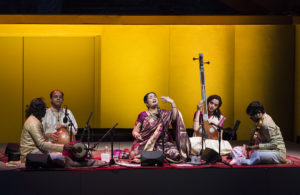 Vijay self-identifies as a composer, but he also places a lot of faith in real-time music-making. In Ojai he’ll play duets with the aforementioned trumpeter-composer Wadada Leo Smith, and he will also make music with two of today’s foremost Indian classical performers: Carnatic vocalist Aruna Sairam (who mesmerized in her 2015 Ojai debut) and pioneering tabla legend Zakir Hussain. The thrill of the musical moment is also why Iyer is so excited by Tyshawn Sorey (“one of the greatest living musicians – period”), whose Perle Noire: A Portrait of Josephine Baker was a highlight of last year’s Ojai Festival. This year Tyshawn will appear as a featured percussionist throughout the festival, and will present his own, uncategorizable music for Double Trio. Also, in a special program, Sorey will lead members of International Contemporary Ensemble using a technique called “conduction,” a process that exemplifies what Iyer values most in music: a community forged through listening. For Iyer it’s all a matter of trust, though not in the sense of a safe space, but a space for shared daring. Whether responding to the intricate systems of Indian music, the technique of orchestral composition, or the challenges of ensemble improvisation, Vijay is looking for expressive frontiers, “to put ourselves at maximum creative risk whenever possible.”
Vijay self-identifies as a composer, but he also places a lot of faith in real-time music-making. In Ojai he’ll play duets with the aforementioned trumpeter-composer Wadada Leo Smith, and he will also make music with two of today’s foremost Indian classical performers: Carnatic vocalist Aruna Sairam (who mesmerized in her 2015 Ojai debut) and pioneering tabla legend Zakir Hussain. The thrill of the musical moment is also why Iyer is so excited by Tyshawn Sorey (“one of the greatest living musicians – period”), whose Perle Noire: A Portrait of Josephine Baker was a highlight of last year’s Ojai Festival. This year Tyshawn will appear as a featured percussionist throughout the festival, and will present his own, uncategorizable music for Double Trio. Also, in a special program, Sorey will lead members of International Contemporary Ensemble using a technique called “conduction,” a process that exemplifies what Iyer values most in music: a community forged through listening. For Iyer it’s all a matter of trust, though not in the sense of a safe space, but a space for shared daring. Whether responding to the intricate systems of Indian music, the technique of orchestral composition, or the challenges of ensemble improvisation, Vijay is looking for expressive frontiers, “to put ourselves at maximum creative risk whenever possible.”
And he’s inviting us to sit in.
BRAVO Leadership Change: Welcome Sandra Shapiro and Merrill Williams
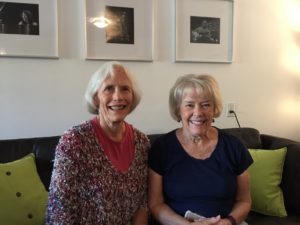 The Ojai Music Festival is pleased to announce Sandra Shapiro and Merrill Williams as new co-chairs of the BRAVO Education Committee. Both Sandra and Merrill are excited to help the program in bringing music programs to school children throughout the Ojai Valley, including Music Van, the Imagine concert, Chumash Music and Culture, Education Through Music (ETM), and the Upbeat Percussion Workshops at Continuing Care Centers.
The Ojai Music Festival is pleased to announce Sandra Shapiro and Merrill Williams as new co-chairs of the BRAVO Education Committee. Both Sandra and Merrill are excited to help the program in bringing music programs to school children throughout the Ojai Valley, including Music Van, the Imagine concert, Chumash Music and Culture, Education Through Music (ETM), and the Upbeat Percussion Workshops at Continuing Care Centers.
Sandra Shapiro has lived in Ojai for ten years. As a nurse, she has experience working with new mothers in the post-partum field, as well as in school health. She is currently on the Board of the Nan Tolbert Nurturing Center, a family-directed outreach program to help families with support, education, and emotional care and served as a past president. Sandra has been an active member of the Ojai Festivals Women’s Committee for five years.
Sandra says about the BRAVO program, “This is something that draws people to be a part of supporting the Festival. It is our greater hope, desire, and awareness that children thrive when exposed to and included in musical participation. They have an appreciation of the expressive culture. Music also builds confidence, brain skills in mathematics and logic and the chance for self-expression. This translates into greater confidence and ultimately better citizens. Music and the arts are part of the powerful, ineffable sphere of the human experience.”
Merrill Williams has lived in Ojai for 44 years. Part of her extensive background in marketing and publicity was working for the Ojai Valley Inn and Spa for 15 years as Public Relations Director. There she worked closely with the national and international press. A long-time Festival subscriber, Merrill recently served as past president of the Ojai Festivals Women’s Committee and joined the Festival’s Board of Director in September. Merrill comes from a musical family; her mother was an arranger who specialized in women’s choral music. She would also lead choirs on tours to local schools and prisons. Merrill is firmly aware of the importance of music to our youth, and to society.
For more information on the Ojai Music Festival’s BRAVO education in the schools and community, click here. If you are interested in the BRAVO committee, a voluntary group that meets once a month, contact Laura Walter at 805 646 2094.
Want to help the program? Join us at the Ojai Holiday Home Tour & Marketplace, November 12 and 13, a major fundraiser for the BRAVO education programs!
Why does L.A. need its own summer classical music festival? – LA Times
Why does L.A. need its own summer classical music festival? For answers, look 6,000 miles away
Mark Swed
Read on the LA Times website >>
Download PDF >>
A tale of two exalted European city festivals begins with surprising signifiers. Conspicuously tacked on a press office bulletin board at the tony Salzburg Festival is a large photo of John Cage. The leading 20th century anti-establishment American artist is — at least in this small Salzburg dominion through which artists, writers and administrators regularly pass — a bastion of the classical music establishment.
At that other prestigious address for classical music in summertime, Lucerne, Switzerland, posters and program books are centered with the words PRIMA DONNA in large type, the I being a graphic of a conductor’s baton extending from the manicured red nail of a lady’s right hand, which is encircled by bees. This year’s theme of the Lucerne festival is the empowerment of women in classical music, particularly as composers and conductors.
Outside observers have found such queen bee business a wee bit condescending, but given that parts of Switzerland gave women the vote only in the 1970s, this is a statement. So too is the fact that the artistic director designate of the Salzburg Festival is Austrian pianist Markus Hinterhäuser, a modern music specialist known for his penetrating recordings of John Cage’s New York School.
Social progress can seem slow in this part of the world. Tradition and history weigh heavily on Switzerland and particularly Austria, where you occasionally encounter opera goers in lederhosen.
Standard repertory and standard stars prevail as they always have in both places. Audiences remain well-heeled. As always, the festivals cater to the classical music business; it can be as easy to run into an orchestra manager or artist’s representative in Salzburg or Lucerne as it is a movie producer in Cannes.
Still something startling is in the air. Lucerne celebrated its 75th anniversary in 2013 with the theme “Viva la Revolución” and festival honchos showed up for a gala event wearing Che garb. Salzburg has yet to announce next year’s program, Hinterhäuser’s first season, but Peter Sellars has said that he will be back at the festival for the first time in almost two decades.
Salzburg and Lucerne are special places. As destination festivals, they have lost none of their importance in the Internet age, however much our expectation is that anything that matters is immediately and effortlessly available.
Indeed the website medici.tv has a smattering of this year’s offerings thus far, including a new production of Gounod’s “Faust” in Salzburg and Riccardo Chailly’s compelling performance of Mahler’s Eighth Symphony with the Lucerne Festival Orchestra. As I write, I am listening on the BBC Radio 3 website to a London Proms broadcast of Mirga Grazinyte-Tyla conducting her first program as music director as the City of Birmingham Symphony Orchestra, and with a little imagination I can feel the excitement in the Royal Albert Hall.
But vicarious reality is really equivocal reality. I’m not there, I’m at my keyboard, half listening, fooling myself while allowing Grazinyte-Tyla’s thrilling Tchaikovsky Fourth Symphony to help speed my typing.
A festival, on the other hand, is a concentrated excursion away from the computer and the quotidian. It needn’t always be a special destination. The Proms, the Berlin Festival, Paris Autumn and Prague Spring and other city festivals are primarily for residents. A few small, out-of-the-way American cities have small destination festivals of note — Ojai, close to home, is one. But Lincoln Center Festival in July comes closest to a big international festival of the performance arts, and it has become less ambitious and less provocative than it once was.
What about Los Angeles? As the city weighs the feasibility of its bid for the 2024 Summer Olympics, let us remember what it meant in 1984 when L.A. mounted an Olympic Arts Festival that changed the complexion of performance arts in Los Angeles. Do we have it in us to do it again by, say, reviving the biannual Los Angeles Festival, the follow-up to the Olympic Arts Festival, which lasted only until 1993 and had ambitions to put us in the league with Berlin and Paris?
First, though, it might be worth considering how Salzburg and Lucerne did it, and how what they do now reverberates around the world.
The Salzburg Festival was founded in 1920 in Mozart’s quaint hometown at the foot of the Austrian Alps to be an international outpouring of opera, concerts and theater from the leading artists of the day. The Lucerne Festival came along 18 years later in reaction to Salzburg having become far too appealing to Hitler and his SS contingent. So the adamant anti-Fascist Arturo Toscanini started a festival on the shores of Lake Lucerne at the foot of the Swiss Alps.
Both festivals enhanced their reputations after World War II with star conductors, notably Herbert von Karajan in Salzburg and Wilhelm Furtwängler in Lucerne. Recordings of concerts and operas from the festivals automatically had the stamp of quality. An air of exclusivity wafted over both places as new concert halls and opera houses were built and offerings became more lavish.
Today Lucerne, which is primarily devoted to concert music, has a budget of around $27 million, while Salzburg, which produces opera and theater as well as concerts, boasts a budget more than double that.
That kind of bankrolling (most of which is private support) can, of course, lend an air of exclusivity, which both festivals have worked hard to lessen, while becoming much more expansive. And to that end, they sponsor education projects, foster emerging artists and commission new work. In Salzburg the lasting contribution from this summer is likely to be the premiere of Thomas Adés’ opera, “The Exterminating Angel,” a work meant to challenge the very essence of status quo — shockingly so in its harsh depiction of stymied high society — which will now be done at Royal Opera in London and at the Metropolitan Opera in New York.
I was also stuck by the Salzburg debut of pianist Yuja Wang. She may be on the flashy side for the more conservative audiences, but she couldn’t have been more modestly respectful — or daring — than to step into eminent Salzburgian shoes. At a legendary 1970 song recital here, German baritone Dietrich Fischer-Dieskau and Russian pianist Sviatoslav Richter, two of the most celebrated musicians of their time, performed Brahms’ song cycle “Die Schöne Magelone.” This summer, in the gilded great hall of the Mozarteum, Wang became the steady hand that saved overwrought baritone Matthias Goerne from his excesses and helped signal a new maturity for the 29-year-old pianist.
At Lucerne, a number of worthy women conductors — Grazinyte-Tyla, to be sure, but also the likes of the American big-band jazz leader Maria Schneider and the adventurous Canadian singer-conductor Barbara Hannigan — are getting important exposure. The biggest news, though, is likely to be the contribution from Olga Neuwirth, this year’s composer in residence.
I heard a performance of her impressive recent immersive work, “Le Encantadas,” in which the audience was surrounded by instrumental groups and electronic music from loudspeakers. It is a gripping evocation of the Galapagos, inspired by Herman Melville’s voyage to the South American islands, that revealed an alluring and unsettling strangeness even one of America’s greatest writers could not capture as well.
Now back home. Arguments could be made for and against Los Angeles becoming a major festival city. The Los Angeles Philharmonic, where Grazinyte-Tyla began as a Dudamel fellow and is associate conductor, does an exceptional job promoting young talent and commissioning new work. Schneider was a featured artist five years ago at the Ojai Music Festival; Hannigan will be its music director in 2019. Not all that serves as news on the European festival circuit is necessarily news to visiting Angelenos.
Moreover, much of what was new and exciting in dance and theater at the Olympic Arts Festival, which opened with Pina Bausch, the choreographer then unknown in the U.S., is now regularly presented by the Center for Art of Performance at UCLA and REDCAT. Even so, we are a multicultural city that barely scratches the surface of consequential work created in Europe, Asia, South America and Africa. For that we need a festival.
So what would it take? First of all, money. Michael Haefliger, Lucerne’s visionary executive and artistic director, told me that if L.A. is going to present a festival it would require a large-scale, full-time operation.
Robert Fitzpatrick, the former president of CalArts who created the 1984 Olympic Arts Festival, said that civic enthusiasm is essential to doing something exceptional. “A festival,” he said over the phone from Long Island, N.Y., “has to be a moment of discovery.”
Fitzpatrick reminded me of the fights he had when he wanted to open his follow-up Los Angeles Festival in 1986 with a Canadian circus no one had ever heard of called Cirque du Soleil. They thought he had to be kidding.
For Fitzpatrick money comes once you have the civic support. Then-Mayor Tom Bradley threw the power of City Hall behind the L.A. Festival. That, Fitzpatrick said, opened doors to donors like Lew Wasserman and Barry Diller.
There is cautious talk coming from the Music Center about an ambitious summer festival, employing its underused-in-the-summer campus, Grand Park and, I would hope, a host of potential venues around downtown. But festivals must be big and bold to matter. Let the talk turn to shouting into loudspeakers at whatever volume is necessary to drown out downtown construction and penetrate the thick walls of the nearby county and city offices.
‘Patricia Kopatchinskaja in praise of minimalism’ – The Guardian
Over the summer, future music director Patricia Kopatchinskaja wrote a piece for The Guardian discussing her favorite pieces of minimalist music – in the process discussing her approach to performing, her relationship with minimalism, and her championing of composer Galina Ustvolskaya. Read the full piece on The Guardian website or download a PDF >>
Less can be more. Arguments do not get more convincing by using more words or by shouting, and a woman does not get more beautiful by hanging lots of jewellery around her. Art forms that make their statements with a minimum of means carry a strong attraction, especially in music. And minimalism is far from a 20th-century invention. Here’s some of my favourite pieces of “minimalist” music .
For me the most outstanding and radical composer of recent times – Galina Ustvolskaja – published only some two dozen works and destroyed the rest, an act which in itself is a form of minimalism. Isolated in the USSR, she wrote the most extreme music, limiting herself to the minimum of musical material and instrumentation, but achieving the maximum of spiritual strength. Her music comes “as is” out of nothing or from deep and primordial sources. She renounces any artificial elaboration. I often think only a woman could become this kind of medium. A man would immediately try to understand, analyse, systematise, “count the legs” of his creature. Ustvolskaja did nothing of the sort.
Here is her Composition No 2 “Dies irae” (1972/3): You see the wooden box that looks like a coffin. This is an instrument of her own invention. In Orthodox Christian countries the closing of the coffin over the body of a beloved relative is a ritual: the hard sound of hitting the coffin nails becomes the memory of a cruel farewell. Throughout her music she is saying – “I give all my soul, all my heart” – and you will do so as well, either as an interpreter or as a listener. Whether you like it or not, your brain will be in serious danger of exploding, and many other pieces of music will suddenly seem an unnecessary waste of time and paper. Of course the piece was banned in her home country after its first performance.
‘Reimagining Josephine Baker’s Music in the Era of Black Lives Matter’ – NY Times
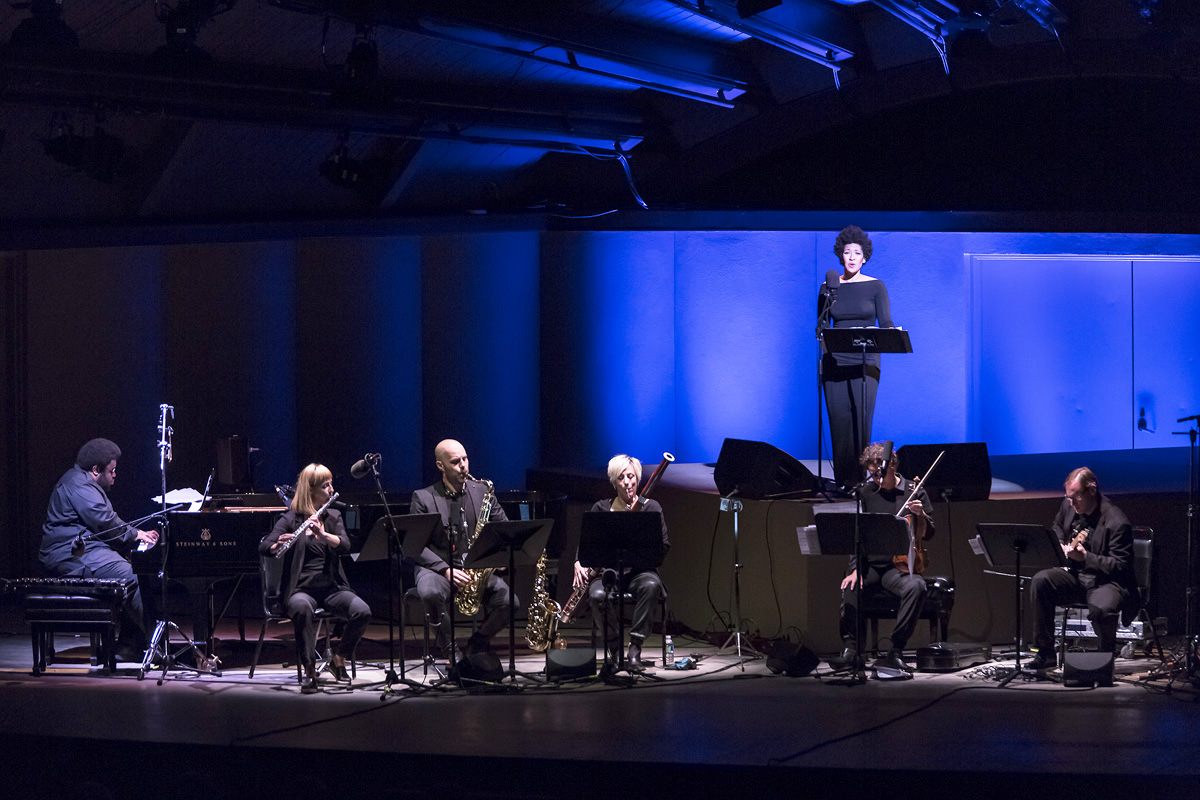
In the lead-up to the East Coast premiere of the Josephine Baker Project, The New York Times Zachary Woolfe sat down with Julia Bullock and Tyshawn Sorey to discuss the genesis and evolution of the project, and its particular importance at this moment in time. Read the full piece on the NY Times website or download a PDF >>
JULIA BULLOCK I had been wanting to sing her songs since college, which was the first time that anyone compared me to Baker. So I was just trying to find the right opportunity, the right person to arrange them, and the right context.
I performed a group of her songs in my New York debut recital, and Peter’s producer caught wind of it. And Peter said that if I would be interested in it, he was hooking up with Claire Chase [the International Contemporary Ensemble’s founder], and they brought Tyshawn on board and Claudia Rankine to write poetry. There was a part of me that didn’t know how much I wanted a white man grandfathering all this. But I think one of Peter’s great strengths is he brings together artists that seem to have a unique perspective and purpose . . .
Were you, are you, thinking about current events?
BULLOCK These issues, they’re always on my mind. When Michael Brown was killed, that happened 20 minutes from my home in St. Louis. All these issues are things I live with and think about daily. Yes, I understood the timeliness of what we were writing. Hearing her sing “Si J’Étais Blanche” [“If I Were White”] in 1925 is just as relevant as singing it now.
I’m half-white, and I thought it was really important as a performer to talk about my complex feelings about going into an industry predominately run by white people. Issues with exoticism still come up. Objectification still comes up. To have an opportunity to speak about that in music was great. I need to say those things right now, and the world needs to hear how I think. And to be given a platform to do it, it’s a gift both Tyshawn and I have been given.
SOREY The music that we make is comprised solely of our life experiences. The police brutality that we’re experiencing right now, it’s been happening for a very long time. I was born and raised in Newark, and police brutality and shootings happened near my block. The difference between then and now is that the media is talking about it. To do a reimagination of the Baker songs to me — even though the music per se might sound a particular way for a particular time — the lyrical content is timeless, and I wanted to create something musically to reflect what we’re experiencing now.
Is it still changing?
BULLOCK We’re all trying to share and experience and re-evaluate. So I can’t say when we’re going to have a finished product on this. I think everyone was in agreement that the first third of it, even though the music was amazing, needed to kind of get it going. So we’ve talked about establishing the relationship between Tyshawn and I, and having a more playful element to open it, creating a more welcoming space. And we’re always talking about what new songs to do .
Relive The Festival Experience
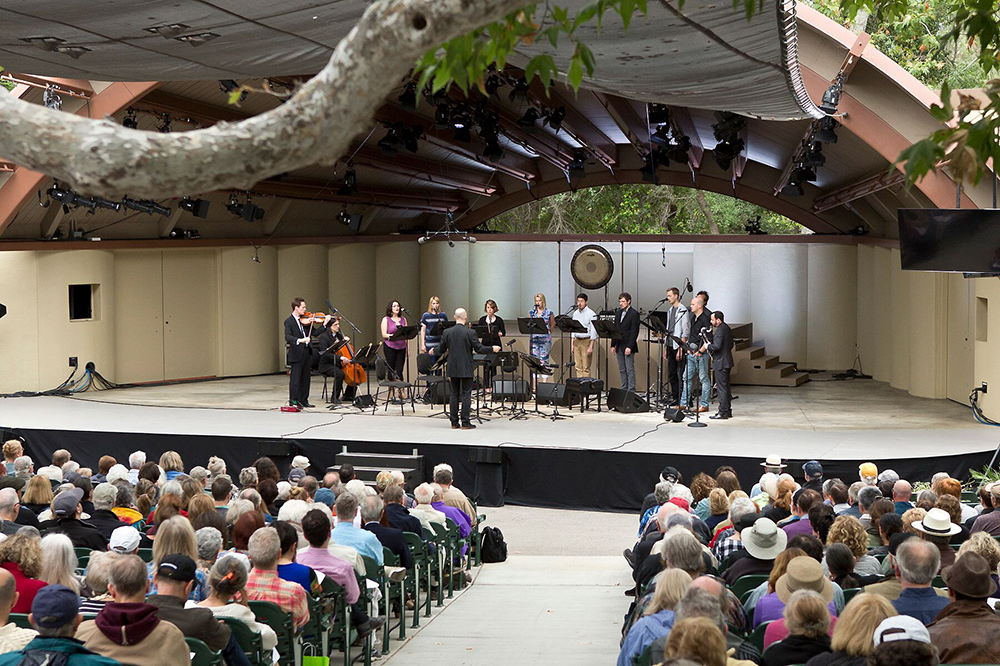
Watch videos of concerts and artist interviews from the 2016 Ojai Music Festival.
2016 Press Photos
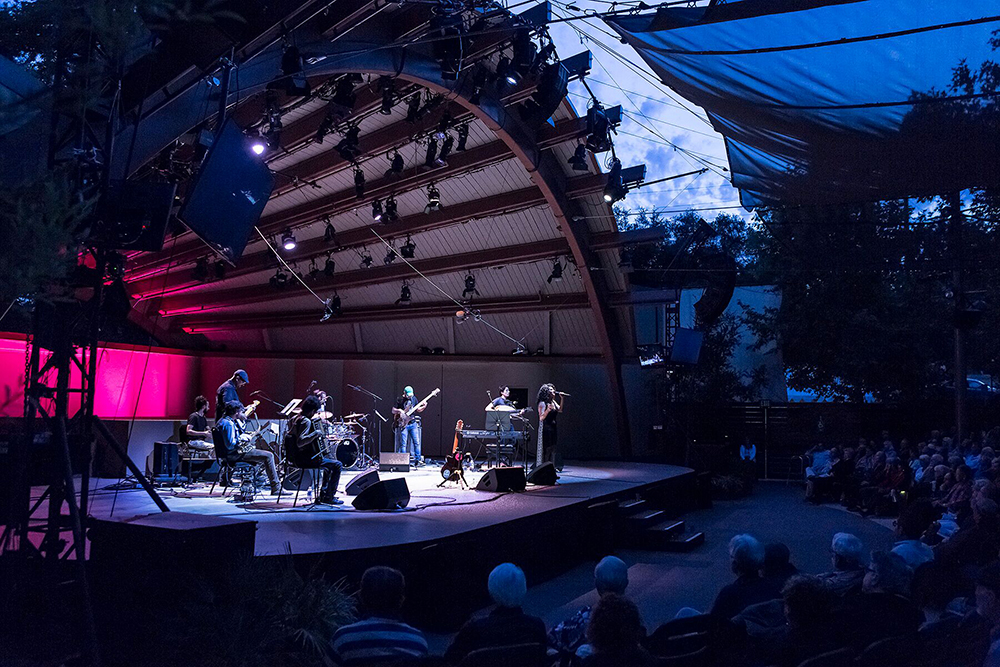
Check out concert photos from the 70th Ojai Music Festival! Photos captured by David Bazemore.
2016 Festival Reviews
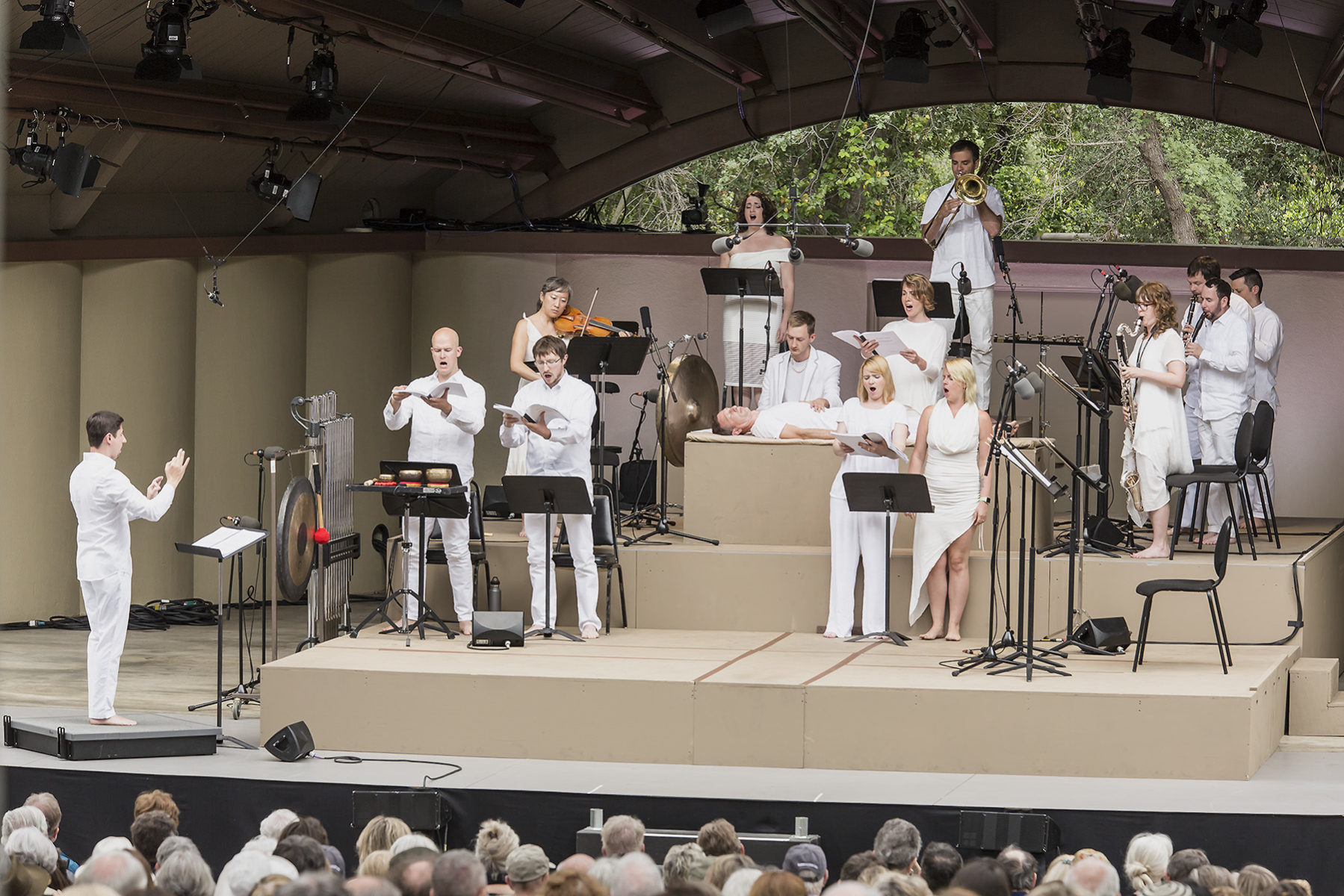
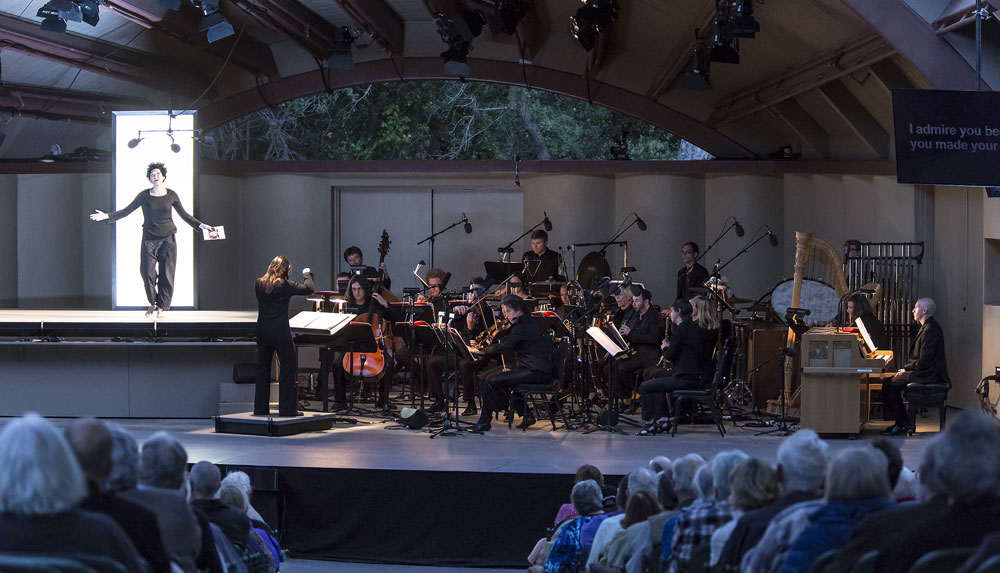
The 2016 Ojai Music Festival with Music Director Peter Sellars embodied the spirit of the Festival with an openness to exploration and risk-taking, adventure and surprise, embracing the new and welcoming the unfamiliar. Relive the 2016 Festival anytime by watching our archived live streaming concerts here.
Feedback from our audience, artists and members of the press is important to us. Read excerpts here or download the full PDF version.
In part because this 70-year-old festival’s musical leadership changes each year, its audience — loyal and attentive, with a bourgeois-bohemian vibe that aptly reflects the sheltered, fragrant Ojai — is unusually open to variation and exploration. And just four days long, the event is compact enough to give the sense that its offerings are the product of a single mind rather than a committee. This was Mr. Sellars’s personal playlist, leave it or — more often — take it. – The New York Times
As the great Southern California music retreat, the Ojai Music Festival offers venturesome refuge from normal life for locals and visitors to this blissed-out valley. – Los Angeles Times
Passion finds sustaining nourishment and intimacy in Saariaho’s exquisite chamber score, demonstrating her signature sensitivity to timbre and balance and offering affectingly dark-hued instrumental colorings – Musical America
The role of the work’s narrator (a fictitious sister for Weil created by the librettist, Amin Maalouf) was assumed by the rising soprano Julia Bullock, who lent the performance controlled vigor, tonal purity and fierce commitment – The Wall Street Journal
Her captivating Partita for 8 Voices was a close-harmony vocal exploration by Roomful of Teeth (in which Shaw is a vocalist) of four antique dances that sway and stretch in surprising and captivating contemporary ways. The work won the 2013 Pulitzer Prize for composition. Baritone Davóne Tines and the Calder Quartet’s later performance of Shaw’s By and By (freely set bluegrass and gospel texts) galvanized all present. In the fine acoustics of the Besant Hill School’s Zalk Theater, the rendering by Tines induced tears from many — the composer and Sellars himself among them. – Classical Voice North America
It is not only Saariaho’s work that is gripping, but the entire array of composers on “the front edge” of the next generation that Sellars celebrates. As it happens, most of those brought together for the festival are women, a disparate group with distinctive ideas for the future of music. They, and many of the performers, also represent many countries and multiple continents, brought together to illuminate musical possibilities for the 21st century. – Ventura County Star
If all this sounds like a recipe for confusion, that’s only partly the case. Despite his deliberately esoteric approach, there’s an emotional center to Vivier’s work that this performance managed to communicate very directly to the audience, and many were visibly moved by both the music and the occasion, proving once again that certain musical experiences could only happen in Ojai. – Santa Barbara Independent
Chase silently appeared on stage, an ominously chilly electronic soundscape rising in the background. She launched herself at a tam-tam, rattling and grinding metal sticks along the surface at full fury, before picking up her bass flute. Throwing her whole body into the music, slowly breathing in and whisper-shouting into her instrument, she demonstrated why she is truly one of the most vibrant performers on the concert stage. – I Care If You Listen
2016 Festival Moments
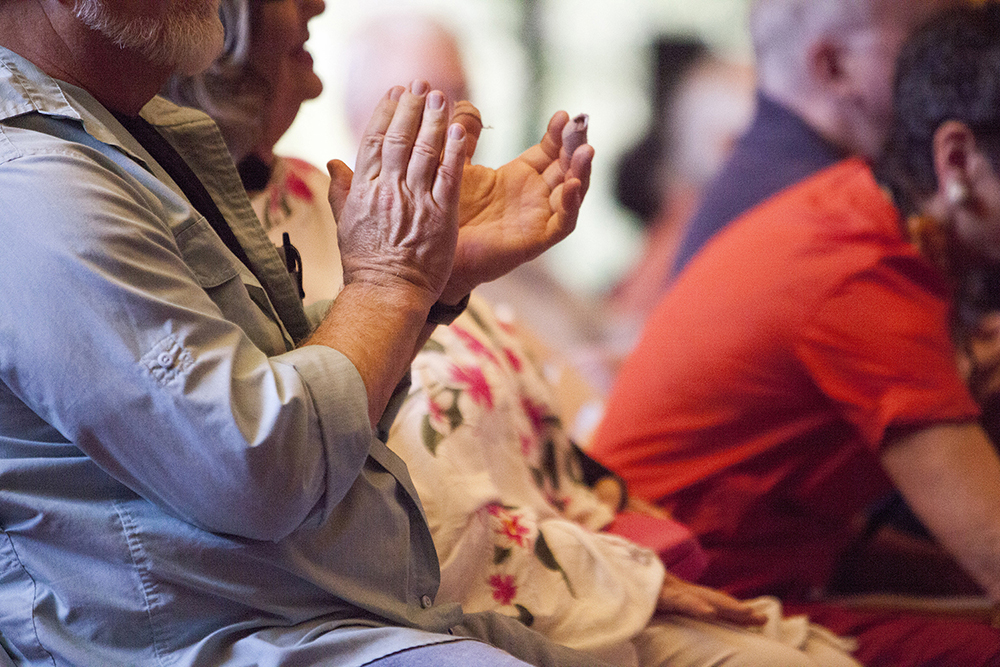
Taken through the lenses of Katurah Ashby and Salt Arts Documentation, here are some moments from the 70th Ojai Music Festival.
Jennifer Koh, violin
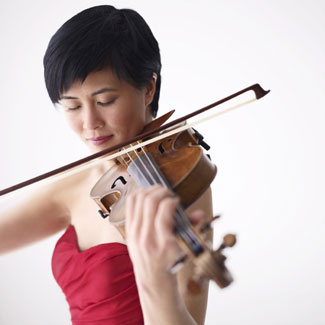
 Violinist Jennifer Koh is recognized for her intense, commanding performances, delivered with dazzling virtuosity and technical assurance. With an impassioned musical curiosity, she is forging an artistic path of her own devising, choosing works that both inspire and challenge. She is dedicated to performing the violin repertoire of all eras from traditional to contemporary, believing that the past and present form a continuum. She is also committed to exploring connections in the works she performs, searching for similarities of voice among diverse composers and associations within the works of a single composer. For her forward-thinking approach to classical music, presenting a broad and eclectic range of repertoire and fostering multidisciplinary collaborations with artists of all types and styles, Ms. Koh has been named Musical America’s 2016 Instrumentalist of the Year.
Violinist Jennifer Koh is recognized for her intense, commanding performances, delivered with dazzling virtuosity and technical assurance. With an impassioned musical curiosity, she is forging an artistic path of her own devising, choosing works that both inspire and challenge. She is dedicated to performing the violin repertoire of all eras from traditional to contemporary, believing that the past and present form a continuum. She is also committed to exploring connections in the works she performs, searching for similarities of voice among diverse composers and associations within the works of a single composer. For her forward-thinking approach to classical music, presenting a broad and eclectic range of repertoire and fostering multidisciplinary collaborations with artists of all types and styles, Ms. Koh has been named Musical America’s 2016 Instrumentalist of the Year.
Steve Lehman, saxophone
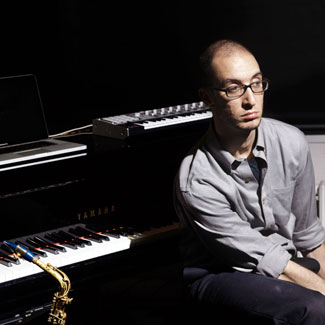

Described as “a state-of-the-art musical thinker” and a “dazzling saxophonist,” by The New York Times, Steve Lehman (b. New York City, 1978) is a composer, performer, educator, and scholar who works across a broad spectrum of experimental musical idioms. Lehman’s pieces for large orchestra and chamber ensembles have been performed by the International Contemporary Ensemble (ICE), So Percussion, Kammerensemble Neue Musik Berlin, the JACK Quartet, the PRISM Saxophone Quartet, and the Talea Ensemble. His recent recording, Mise en Abîme (Pi, 2014) was called the #1 Jazz Album of the year by NPR Music and The Los Angeles Times. And his previous recording, Travail, Transformation & Flow (Pi, 2009), was chosen as the #1 Jazz Album of the year by The New York Times.
From New York: Tom Morris Shares an Inside Look into Rehearsals
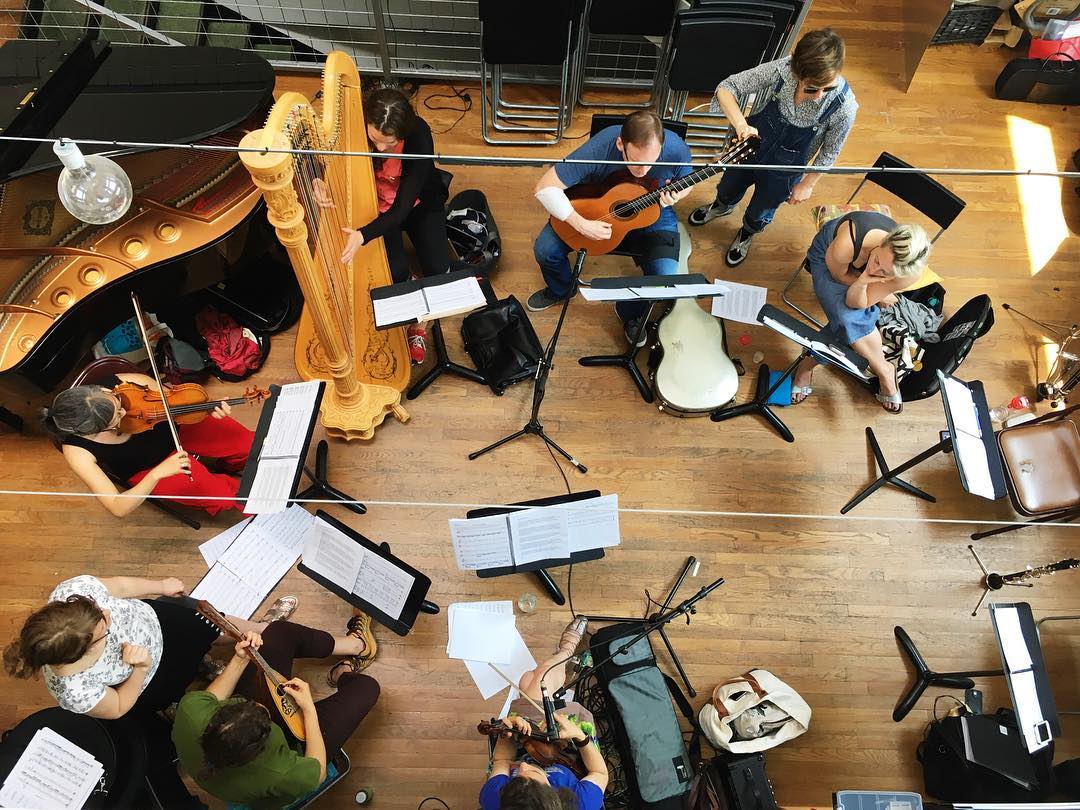
May 27, 2016
I spent the last day at our first rehearsals in New York for Ojai 2016. Most of artists are in New York so it is most efficient to do much of our preparation work there. We will be holding rehearsals there through June 1, and then the artists then come to Ojai June 3 to resume preparations June 4.
Yesterday started with a rehearsal for Josephine Baker A Portrait at ICEhaus, ICE’s home in Brooklyn. Soprano Julia Bullock has long been an advocate of Josephine Baker, the astonishing black American singer who in 1925 emigrated to Paris and became one of the most famous entertainers in the world. For Ojai, Peter Sellars and Julia Bullock have devised a very unique musical portrait of this remarkable artist with new and mind-bending arrangements by composer/drummer/trombonist/pianist Tyshawn Sorey. I first heard of Tyshawn from Vijay Iyer in planning for the 2017 Ojai Festival. Claire Chase suggested last summer that Tyshawn collaborate for the Baker project. The results are simply amazing – fresh, insightful, moving and powerful. The work is scored for Julia Bullock and a small ensemble of ICE payers – violin, flute, bassoon, oboe, and guitar – plus Tyshawn himself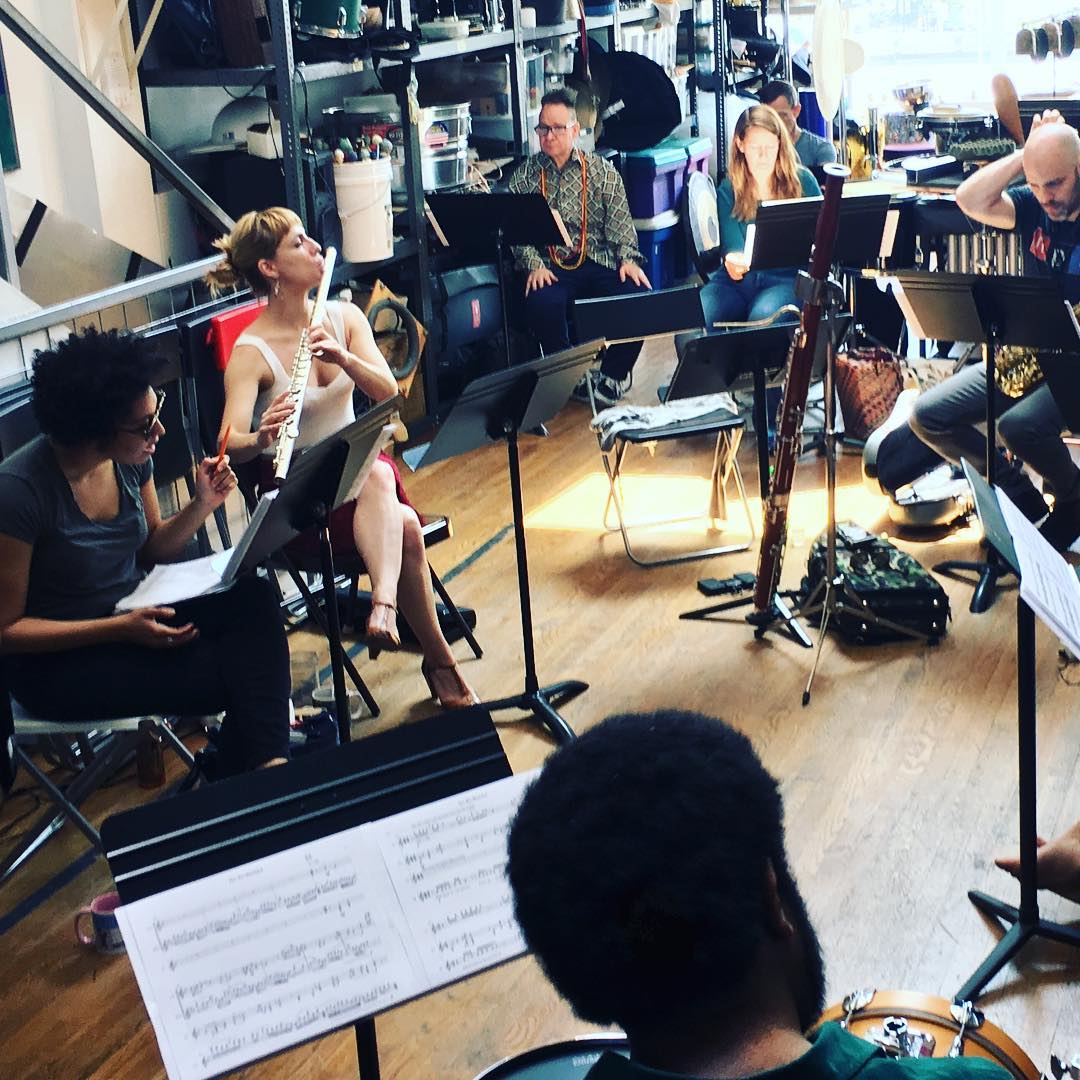 on piano and drums.
on piano and drums.
This was followed by the arrival of singer/composer/violinist Carla Kihlstedt to rehearse her At Night We Walk in Circles and Are Consumed by Fire. Carla thrilled Ojai audiences in 2009 with her unforgettable performance of Lisa Bielawa’s Kafka Songs for soprano and violin, in which Carla unbelievably performed both parts simultaneously. Carla’s work, a setting of dreams, involves herself as singer with a nine-piece ensemble of ICE, and will be performed Friday afternoon at 3pm. The work is magical.
Finally, I went to the Park Avenue Armory to hear two the first two rehearsals of Claude Vivier’s Kopernikus. This fiendishly difficult work is scored for seven vocalists (all from the remarkable Roomful of Teeth) and seven members of ICE, all masterfully conducted by Eric Dudley, also a member of Roomful of Teeth. As Christopher Hailey has written in the program book, “Kopernikus, more an oratorio than an opera, is a series of scenes depicting the journey of the alto soloist, Agni (the name of the Hindu god of fire), as she encounters, in death, a succession of mythical and historical gures (sung by the other six solo singers), including Lewis Carroll, Merlin, a sorceress, the Queen of the Night, a blind prophet, an old monk, Tristan and Isolde, Mozart, the Master of the Waters, and Copernicus and his mother. “ As Vivier himself writes, “these characters are perhaps the dreams that accompany Agni during her initiation and finally into her dematerialization.” The composer has urged “we not try to read any meaning into what happens but try to feel what’s happening. Not try to understand, but to enjoy what’s happening. It’s for this reason that it’s written in large part in an invented language of phonetic sounds”.
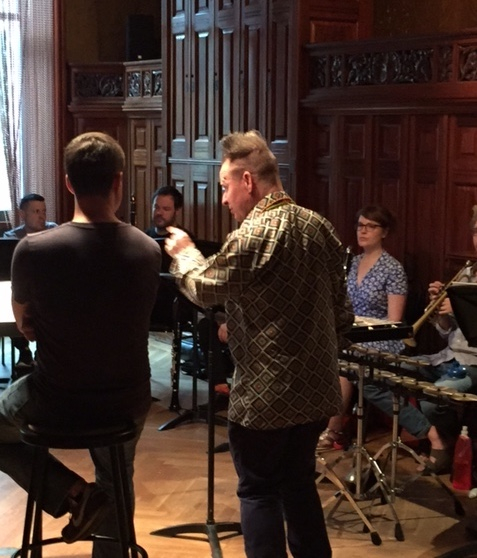
Despite the staggering difficulty and complexity of the music, I was totally unprepared to experience the sheer exhilarating beauty of the music live (I had only previously heard a DVD of a staged performance from Amsterdam), the result of the absolutely incredible virtuosity and commitment of Roomful of Teeth and ICE. Watching Peter Sellars coax, explain, and give meaning to text was a revelation. In planning this festival, Kopernikus was clearly a priority of Peter, who has long believed in the piece, but never done it before. I cannot wait to hear how the many rehearsals develop (there are three more full days of in New York, before three days in Ojai. The work is the final concert in the Libbey Bowl on Sunday June 12 before everyone heads off for the festival finale in Santa Paula.
We are in for some incredible musical experiences week after next!
– Tom Morris
Aruna Sairam, vocalist

 Padma Shri Aruna Sairam, a renowned music ambassador of India, is one of the great classical music voices of India. Her style is rooted in tradition, yet continues to evolve. She belongs to the Veenai Dhanammal school of Carnatic music, known for its strict adherence to tradition and form. After her initial learning from her mother, who was a classical singer, Aruna, at the age of 10, became a disciple of the legendary T. Brinda. (T. Brinda is from the family of T. Balasaraswathi and T. Viswanathan—pioneers who brought South Indian classical music to the United States.) She was the first to introduce the Abhang, a distinctive folk music form from Western India, into a traditional Southern Indian Carnatic concert. She has also collaborated with leading musicians such as Dominique Vellard of France (classical liturgical, medieval, and Gregorian chants); Noureddine Tahiri of Morocco (Arabo-Andalusian music); Christian Bollmann of Germany (neo-classical music); Bollywood singer Shankar Mahadevan; mandolin virtuoso U.Srinivas, dancer Chandralekha; and multi-instrumentalist Ranjit Barot.
Padma Shri Aruna Sairam, a renowned music ambassador of India, is one of the great classical music voices of India. Her style is rooted in tradition, yet continues to evolve. She belongs to the Veenai Dhanammal school of Carnatic music, known for its strict adherence to tradition and form. After her initial learning from her mother, who was a classical singer, Aruna, at the age of 10, became a disciple of the legendary T. Brinda. (T. Brinda is from the family of T. Balasaraswathi and T. Viswanathan—pioneers who brought South Indian classical music to the United States.) She was the first to introduce the Abhang, a distinctive folk music form from Western India, into a traditional Southern Indian Carnatic concert. She has also collaborated with leading musicians such as Dominique Vellard of France (classical liturgical, medieval, and Gregorian chants); Noureddine Tahiri of Morocco (Arabo-Andalusian music); Christian Bollmann of Germany (neo-classical music); Bollywood singer Shankar Mahadevan; mandolin virtuoso U.Srinivas, dancer Chandralekha; and multi-instrumentalist Ranjit Barot.
Wadada Leo Smith, trumpet

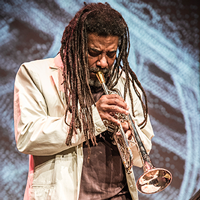 A trumpeter and multi-instrumentalist, composer, and improviser, Ishmael Wadada Leo Smith has been active in creative contemporary music for over forty years. His systemic music language Ankhrasmation is significant in his development as an artist and educator.
A trumpeter and multi-instrumentalist, composer, and improviser, Ishmael Wadada Leo Smith has been active in creative contemporary music for over forty years. His systemic music language Ankhrasmation is significant in his development as an artist and educator.
Born in Leland, Mississippi, Smith’s early musical life began in the high school concert and marching bands. At the age of thirteen, he became involved with the Delta Blues and Improvisation music traditions. He received his formal musical education with his stepfather Alex Wallace, the U.S. Military band program (1963), Sherwood School of Music (1967-69), and Wesleyan University (1975-76). Mr. Smith has studied a variety of music cultures: African, Japanese, Indonesian, European and American.
He has taught at the University of New Haven (1975-’76), the Creative Music Studio in Woodstock, NY (1975-’78), and Bard College (1987-’93). He is currently a faculty member at The Herb Alpert School of Music at California Institute of the Arts. He is the director of the African-American Improvisational Music program, and is a member of ASCAP, Chamber Music America, and the Association for the Advancement of Creative Musicians.
The Ojai Music Festival Makes Musicians of All Children
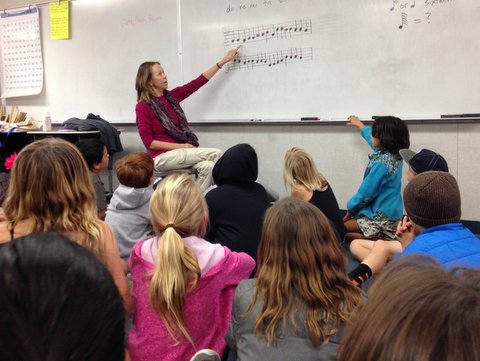
The Ojai Music Festival’s BRAVO program is laying the foundation for all of Ojai’s public school children to become musicians, starting at a very early age. In first and second grades, the students experience songs, games, rhythmic activities and simple sound/symbol matching. This year, BRAVO has expanded its reach to third graders, who are beginning to read musical notes. Weekly lessons are taught by Laura Walter using the principles of ETM (Education Through Music).
Next year, when these students are in fourth grade, they will be given the opportunity to sample a variety of instruments, provided by BRAVO. These early musical opportunities are paying dividends, as students are inspired to play instruments or sing in chorus at the intermediate, junior and senior high school level. Students who do not move into further music training have developed an appreciation of music which will serve them well throughout their lives.
According to Kathy Broesamle, ETM volunteer and grandparent of three public school music students, “it’s no wonder that Nordhoff High School has such a strong music program that encompasses classical, jazz, choral and theatrical elements. We are blessed with highly talented and devoted teachers, as well as students who, thanks to BRAVO have a solid music background.”
BRAVO, made possible by the Ojai Music Festival, is funded by community donations and the proceeds from the Holiday Home Look-in and Holiday Marketplace, which will be on November 12-13, 2016.
Watch Peter Sellars and 2016 Artists with our YouTube Playlist
Watch videos with 2016 Music Director Peter Sellars and other Festival artists who will be in Ojai this June! Use the playlist below to browse and play, or watch more videos from past years on our YouTube channel >>
Q2 Music and WQXR Present: Ojai Music Festival and Peter Sellars



Q2 Music and WQXR
Present
Ojai Music Festival and Peter Sellars
Hosted by Helga Davis
Music and Conversation with 2016 Ojai Music Festival Director and Performing Artists
Friday, May 13, 2016
7:00pm
The Jerome L. Greene Performance Space
44 Charlton Street (corner of Varick Street)
New York, New York 10013
$30 general admission
Please join us for an evening of live performances from artists featured in the upcoming 2016 Ojai Music Festival and a conversation with the world-renowned music director, Peter Sellars. He will also share insights and anecdotes from a prodigious, colorful and unique career as a driving force in the creation of new music and bringing 20th and 21st century operas to the stage.
Champagne Reception to Follow
Kindly respond to Alex Spinks by Monday, May 2, 2016
646 829 4274 | [email protected]
New Collaboration With The Wallis
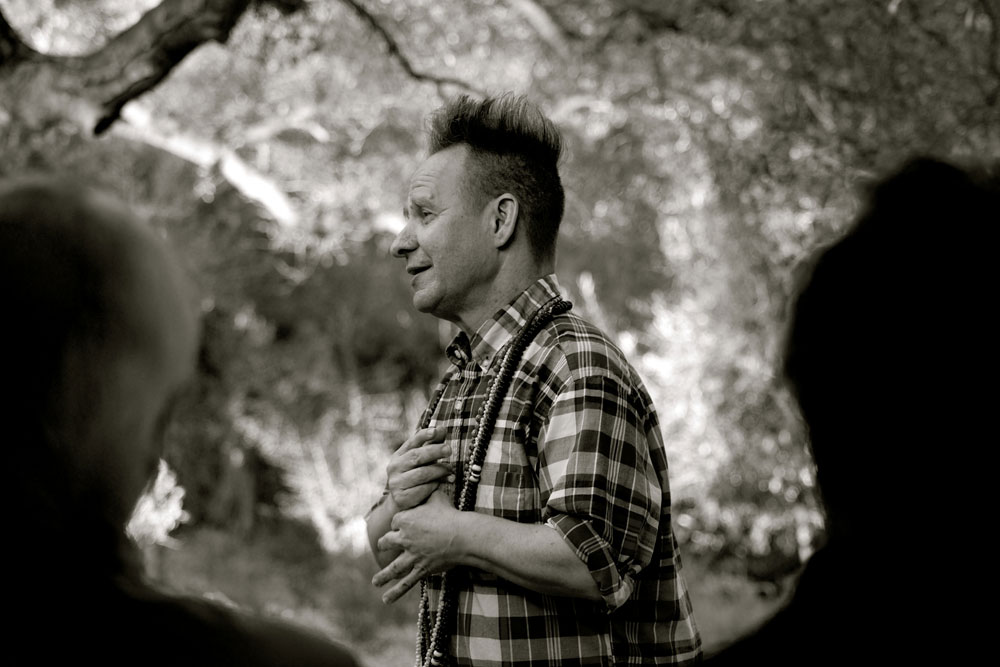
The Ojai Music Festival and the Wallis Annenberg Center for the Performing Arts are excited to announce An Evening With Peter Sellars, 2016 Ojai Festival Music Director with Alex Ross, on Monday, May 16, 2016 at 7:30pm.
The Wallis Annenberg Center for the Performing Arts joins forces with the Ojai Music Festival for the first time to present a lively Arts & Ideas conversation between groundbreaking opera and theater director Peter Sellars and The New Yorker music critic Alex Ross. The conversation will take place on the stage of the Bram Goldsmith Theater on Monday, May 16 at 7:30pm.
Sellars, Music Director of the 2016 Ojai Music Festival in June, has gained international renown for his transformative interpretations of artistic masterpieces such as John Adams’ Nixon in China and The Death of Klinghoffer, as well as for his distinctive collaborations with an extraordinary range of artists including Finnish composer Kaija Saariaho, dance pioneer Reggie Gray and Nobel Prize-winning novelist Toni Morrison. Ross, a 2008 MacArthur “Genius” Fellow, is the author of The Rest is Noise: Listening to the Twentieth Century, winner of the National Book Critics Circle Award and finalist for the Pulitzer Prize.
“I am delighted that we can welcome Peter and Alex to our stage for this event,” said Paul Crewes, The Wallis’ new Artistic Director who takes the reins full time next month in April 2016. “Our Arts & Ideas series has enjoyed great success this season, and our exciting new affiliation with the Ojai Music Festival will surely deliver another great night captivating discussion between these two brilliant men.”
“We are delighted to be collaborating with The Wallis for this exciting event with Peter Sellars, our 2016 Music Director and a passionate advocate for the intersection of music and community, and Alex Ross, music critic of The New Yorker and acclaimed writer on music of our time,” expressed Thomas W. Morris, Artistic Director of the Ojai Music Festival are now available for $25 – $35. For more information or to purchase tickets, visit TheWallis.org, call 310.746.4000, or stop by in person at the Wallis Annenberg Center for the Performing Arts Ticket Services located at 9390 N. Santa Monica Blvd., Beverly Hills, CA 90210. Ticket prices subject to change.
